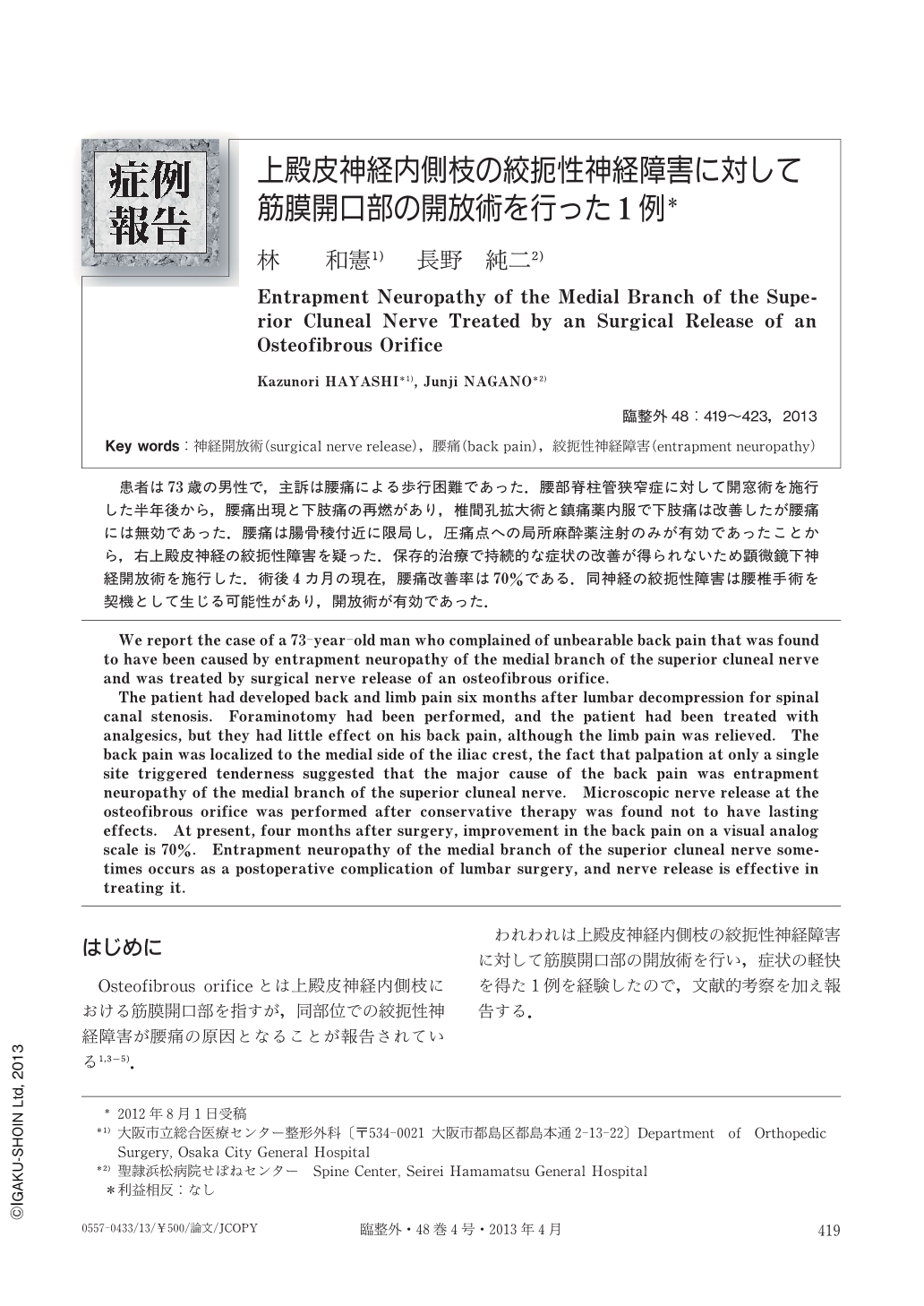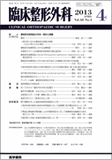Japanese
English
- 有料閲覧
- Abstract 文献概要
- 1ページ目 Look Inside
- 参考文献 Reference
患者は73歳の男性で,主訴は腰痛による歩行困難であった.腰部脊柱管狭窄症に対して開窓術を施行した半年後から,腰痛出現と下肢痛の再燃があり,椎間孔拡大術と鎮痛薬内服で下肢痛は改善したが腰痛には無効であった.腰痛は腸骨稜付近に限局し,圧痛点への局所麻酔薬注射のみが有効であったことから,右上殿皮神経の絞扼性障害を疑った.保存的治療で持続的な症状の改善が得られないため顕微鏡下神経開放術を施行した.術後4カ月の現在,腰痛改善率は70%である.同神経の絞扼性障害は腰椎手術を契機として生じる可能性があり,開放術が有効であった.
We report the case of a 73-year-old man who complained of unbearable back pain that was found to have been caused by entrapment neuropathy of the medial branch of the superior cluneal nerve and was treated by surgical nerve release of an osteofibrous orifice.
The patient had developed back and limb pain six months after lumbar decompression for spinal canal stenosis. Foraminotomy had been performed, and the patient had been treated with analgesics, but they had little effect on his back pain, although the limb pain was relieved. The back pain was localized to the medial side of the iliac crest, the fact that palpation at only a single site triggered tenderness suggested that the major cause of the back pain was entrapment neuropathy of the medial branch of the superior cluneal nerve. Microscopic nerve release at the osteofibrous orifice was performed after conservative therapy was found not to have lasting effects. At present, four months after surgery, improvement in the back pain on a visual analog scale is 70%. Entrapment neuropathy of the medial branch of the superior cluneal nerve sometimes occurs as a postoperative complication of lumbar surgery, and nerve release is effective in treating it.

Copyright © 2013, Igaku-Shoin Ltd. All rights reserved.


